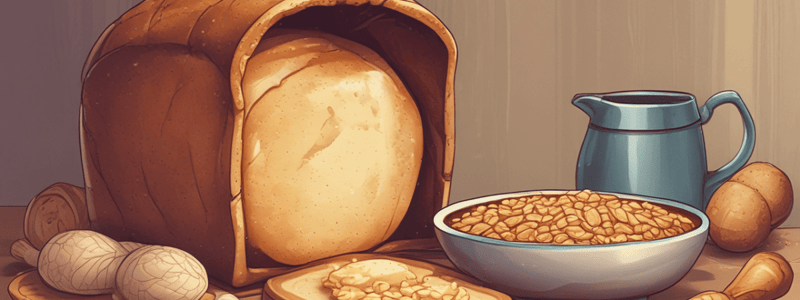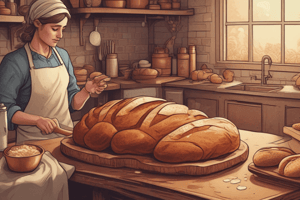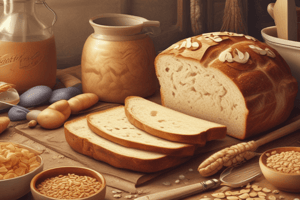Podcast
Questions and Answers
What is the purpose of soaking whole cereal grains or cracked grains in water?
What is the purpose of soaking whole cereal grains or cracked grains in water?
- To hydrate the flour
- To reduce the quantity of water in the dough
- To weaken the dough structure
- To absorb the water completely (correct)
When is the soaker added to the dough in some formulas?
When is the soaker added to the dough in some formulas?
- At the start of the mixing process (correct)
- At the end of the mixing process
- During the fermentation process
- After the proofing process
What is the name of the grain-and-water mix?
What is the name of the grain-and-water mix?
- Bread mixture
- Flour mixture
- Soaker (correct)
- Dough starter
Why is the soaker added at the end of the mixing process in some formulas?
Why is the soaker added at the end of the mixing process in some formulas?
What happens to the water quantity in the soaker?
What happens to the water quantity in the soaker?
Flashcards are hidden until you start studying
Study Notes
Preparing Whole Cereal Grains for Dough
- Whole cereal grains or cracked grains are often soaked in water overnight to prepare them for use in dough.
- The quantity of water used is generally completely absorbed by the grains.
- The grain-and-water mixture is called a soaker.
- Water added to the soaker is calculated separately from the water used to hydrate the flour in bread dough.
- Some recipes call for adding the soaker at the start of the mixing process.
- Others recommend adding the soaker at the end of mixing to minimize its weakening effect on dough structure.
Studying That Suits You
Use AI to generate personalized quizzes and flashcards to suit your learning preferences.




